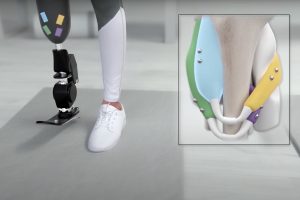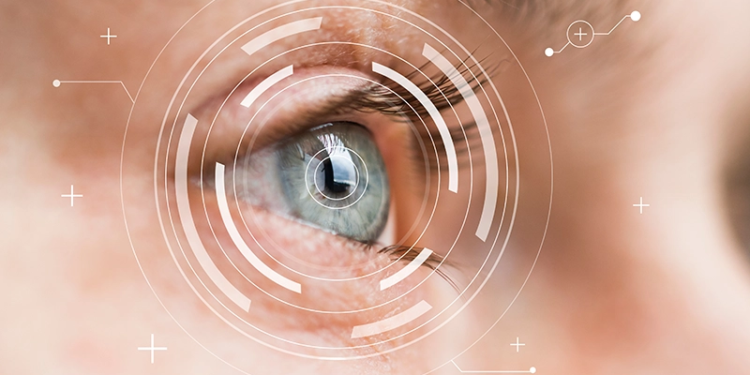Researchers at the Massachusetts Institute of Technology (MIT) used magnets to develop a sophisticated way to monitor muscle movements, which they hope will make it easier for people with amputations to control their prosthetic limbs in a way that more closely mimics natural limb movement. In a new pair of papers, the researchers demonstrated the accuracy and safety of their magnet-based system, which can track the length of muscles during movement.

“These recent results demonstrate that this tool can be used outside the lab to track muscle movement during natural activity, and they also suggest that the magnetic implants are stable and biocompatible and that they don’t cause discomfort,” said Cameron Taylor, PhD, an MIT research scientist, and co-lead author of both papers.
In one of the studies, the researchers showed that they could accurately measure the lengths of turkeys’ calf muscles as the birds ran, jumped, and performed other natural movements. In the other study, they showed that the small magnetic beads used for the measurements do not cause inflammation or other adverse effects when implanted in muscle.
“I am very excited for the clinical potential of this new technology to improve the control and efficacy of bionic limbs for persons with limb-loss,” said Hugh Herr, PhD, a professor of media arts and sciences, co-director of the K. Lisa Yang Center for Bionics at MIT, and an associate member of MIT’s McGovern Institute for Brain Research. Herr is a senior author of both papers.
Powered prosthetic limbs are usually controlled with surface electromyography (EMG). Electrodes attached to the surface of the skin or surgically implanted in the residual muscle of the amputated limb measure electrical signals from a person’s muscles, which are fed into the prosthesis to help it move the way the person wearing the limb intends.
However, the researchers said, that approach does not take into account any information about the muscle length or velocity, which could help to make the prosthetic movements more accurate.
The new strategy, called magnetomicrometry, takes advantage of the permanent magnetic fields surrounding small beads implanted in a muscle. Using a credit-card-sized, compass-like sensor attached to the outside of the body, the system can track the distances between the two magnets. When a muscle contracts, the magnets move closer together, and when it flexes, they move further apart. To test the method, the researchers created an obstacle course in which turkeys climbed ramps climb and jumped on and off boxes. The researchers used the magnetic sensor to track muscle movements during these activities and found that the system could calculate muscle lengths in less than a millisecond.
In the second paper, the researchers focused on the biocompatibility of the implants. They found that the magnets did not generate tissue scarring, inflammation, or other harmful effects. They also showed that the implanted magnets did not alter the turkeys’ gaits, suggesting they did not produce discomfort.
The researchers also showed that the implants remained stable for eight months, the length of the study, and did not migrate toward each other, as long as they were implanted at least three centimeters apart. The researchers envision that the beads, which consist of a magnetic core coated with gold and a polymer called Parylene, could remain in tissue indefinitely once implanted.
“Magnets don’t require an external power source, and after implanting them into the muscle, they can maintain the full strength of their magnetic field throughout the lifetime of the patient,” Taylor says.
The researchers are planning to seek approval from the Food and Drug Administration to test the system in people with prosthetic limbs.
“The place where this technology fills a need is in communicating those muscle lengths and velocities to a wearable robot, so that the robot can perform in a way that works in tandem with the human,” Taylor says. “We hope that magnetomicrometry will enable a person to control a wearable robot with the same comfort level and the same ease as someone would control their own limb.”
The papers, “Untethered muscle tracking using magnetomicrometry,” and “Clinical viability of magnetic bead implants in muscle,” were published in Frontiers in Bioengineering and Biotechnology.
Editor’s note: This story was adapted from materials provided by MIT.




